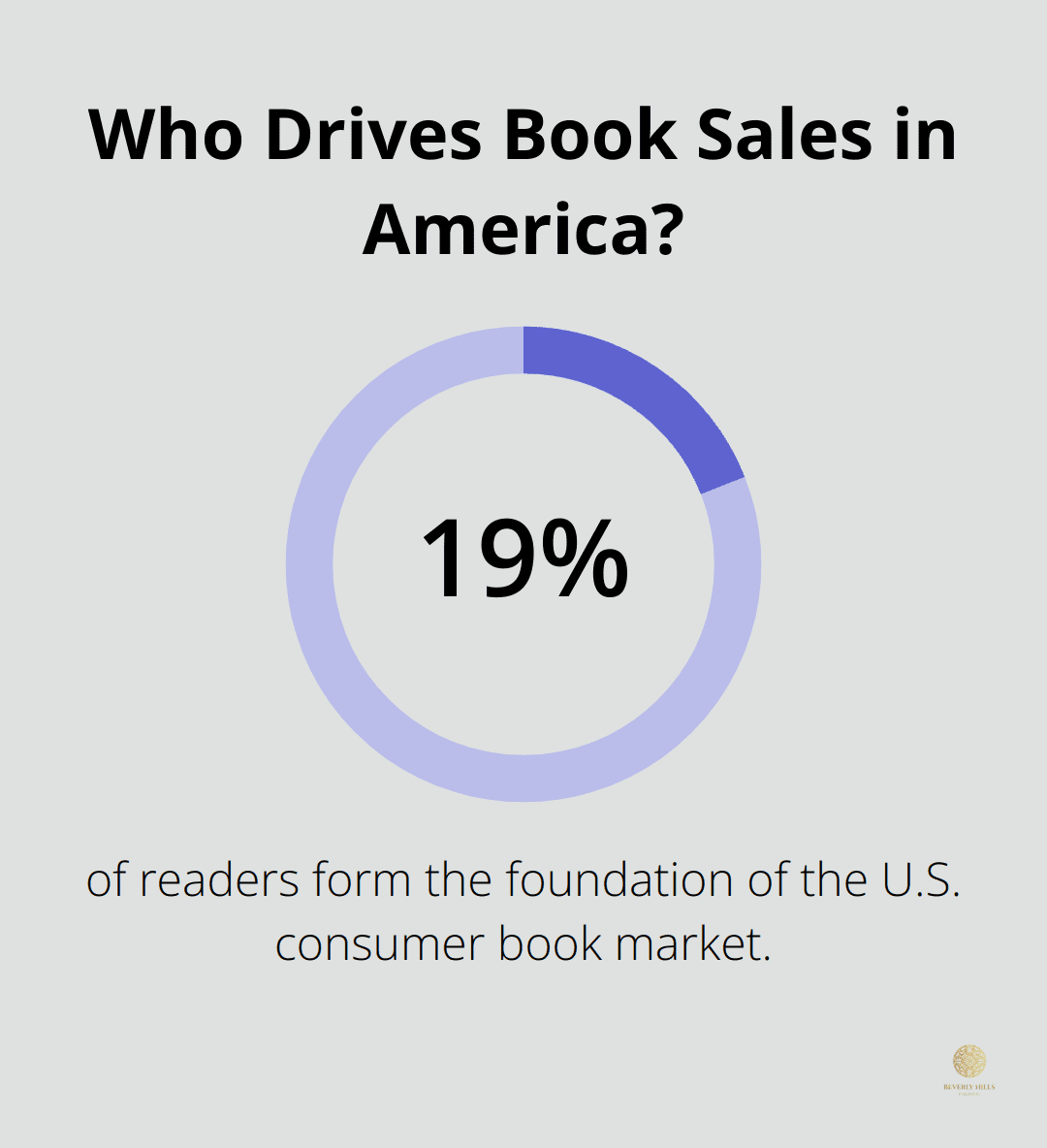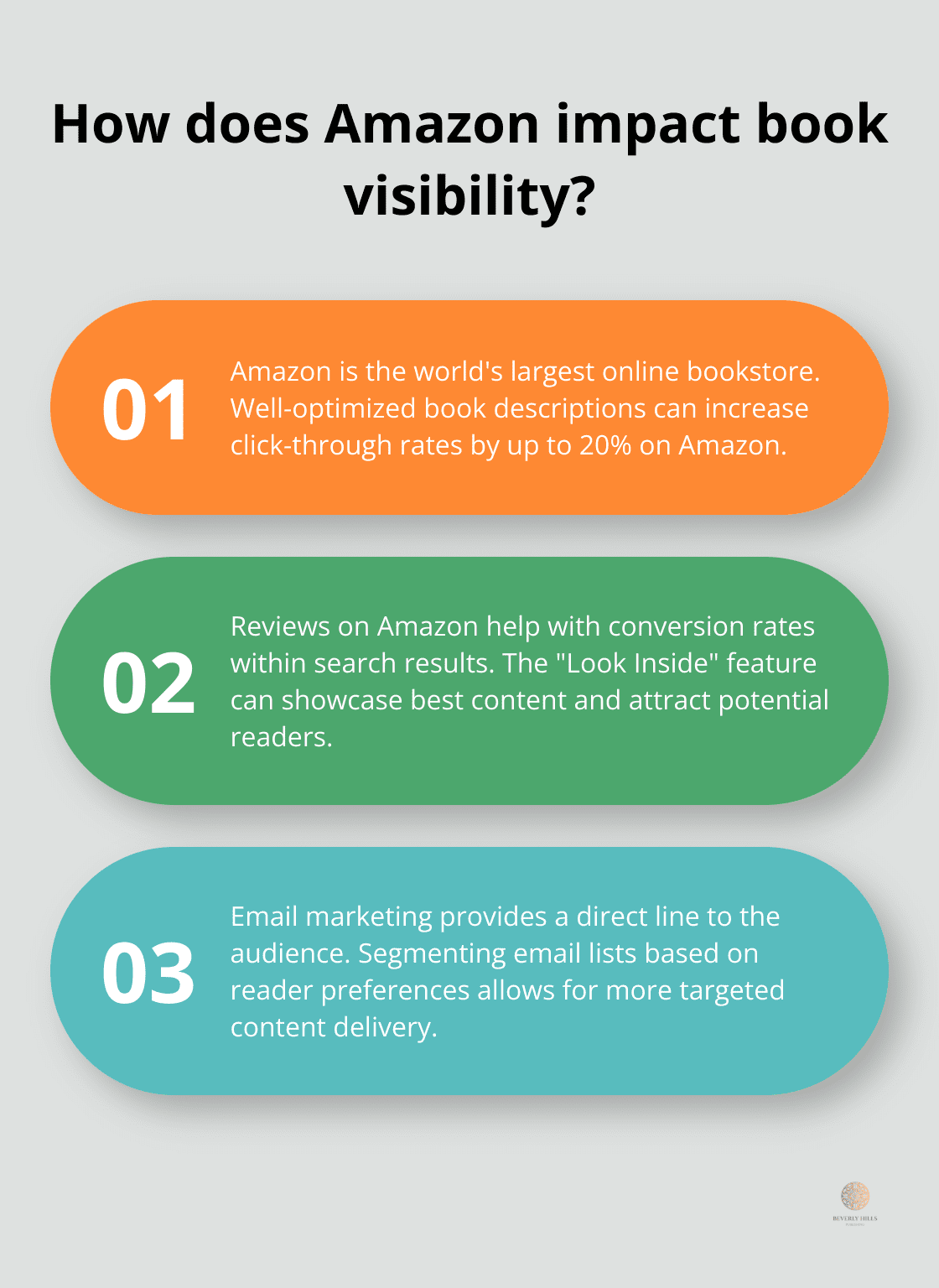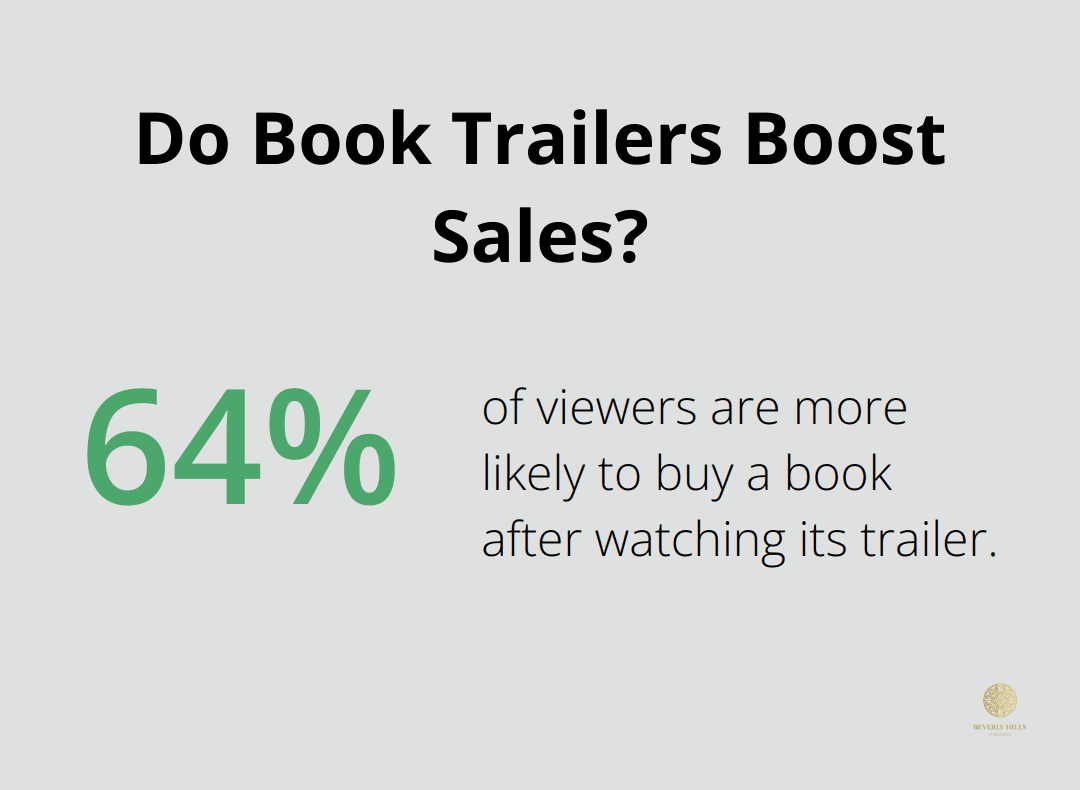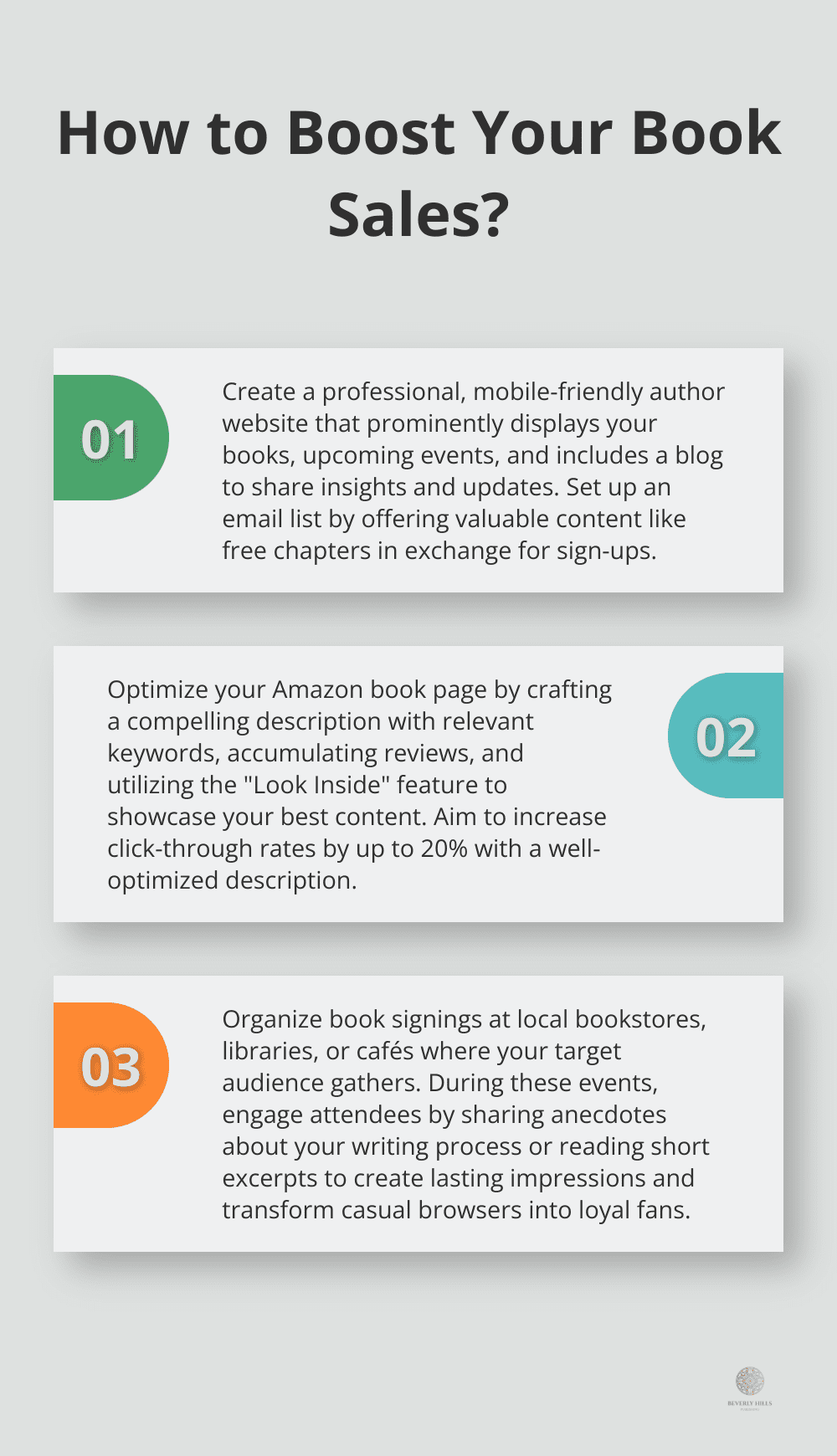At Beverly Hills Publishing, we know that writing a book is just the first step. The real challenge lies in getting your work into the hands of readers.
Book marketing techniques are essential for authors who want to stand out in a crowded marketplace. From building a strong online presence to leveraging traditional marketing methods, there are numerous strategies to help your book succeed.
In this post, we’ll explore proven techniques to boost your book’s visibility and sales.
How to Build Your Author Platform
Crafting Your Author Website
Your author website serves as the cornerstone of your online presence. It’s the go-to place for readers, media, and industry professionals to learn about you and your work. A professional, easy-to-navigate, and mobile-friendly website is essential. Include a blog to share insights and updates, and prominently display your books and upcoming events.

A study by the Codex Group suggests that 19% of readers form the foundation of the U.S. consumer book market. This statistic highlights the importance of a well-designed, informative site that showcases your work and personality.
Mastering Social Media
Social media offers a powerful tool to connect with readers and build your brand. Focus on platforms where your target audience is most active. For example, Instagram and TikTok might work best for young adult fiction authors, while LinkedIn could be the primary platform for business authors.
Consistency is key in social media. Post regularly and engage with your followers. Share behind-the-scenes glimpses of your writing process, book recommendations, and personal insights. This approach helps create a connection with your audience and keeps them invested in your work.
Defining Your Author Brand
Your author brand extends beyond your name and book titles. It encompasses the unique voice and perspective you bring to your writing and interactions with readers. Take time to define what sets you apart as an author. Consider the themes you explore in your work and the values you stand for.
Once you identify these elements, incorporate them into everything you do – from your website design to your social media posts to your author bio. A cohesive brand helps readers understand what to expect from you and your books, making them more likely to become loyal fans.
Leveraging Email Marketing
Email marketing remains one of the most effective ways to reach your audience directly. Build an email list by offering valuable content (such as free chapters or exclusive insights) in exchange for sign-ups. Regular newsletters keep your readers engaged and informed about your latest work, events, and promotions.
According to Campaign Monitor, email marketing costs start at just $9 a month for up to 2500 emails, and the ROI can be as high as $38 for every $1 spent, making it a highly cost-effective marketing tool for authors.
Engaging in Public Speaking
Public speaking opportunities (both in-person and virtual) can significantly boost your author platform. Seek out speaking engagements at literary festivals, book clubs, and industry conferences. These events not only increase your visibility but also provide valuable networking opportunities and direct interaction with your readers.
As you continue to grow your platform, you’ll discover more opportunities to connect with readers, increase your visibility, and ultimately, sell more books. The next step in mastering book marketing techniques involves harnessing the power of online strategies to amplify your reach and impact.
Maximizing Online Visibility for Your Book
Optimizing Your Amazon Presence
Amazon, the world’s largest online bookstore, plays a pivotal role in an author’s success. To boost your book’s visibility on this platform, craft a compelling book description. Use relevant keywords for your genre and target audience (but avoid overuse). Amazon’s data suggests that well-optimized descriptions can increase click-through rates by up to 20%.

Focus on accumulating reviews. While Amazon’s algorithm considers various factors, reviews can help with conversion rates within search results. Include a polite request for honest reviews at the end of your book. The “Look Inside” feature can showcase your best content and attract potential readers.
The Power of Email Marketing
Email marketing provides a direct line to your audience. Build your email list early, preferably before your book launch. Offer valuable content, such as free chapters or exclusive insights, in exchange for sign-ups.
Segment your email list based on reader preferences or behavior for more targeted content. You might send different emails to book purchasers versus non-purchasers.
When creating emails, prioritize value over promotion. Share writing tips, behind-the-scenes insights, or exclusive content to maintain subscriber engagement. Try to balance valuable content with promotion to keep readers interested.
Content Marketing Strategies
Content marketing attracts and engages potential readers effectively. Start a blog on your author website and publish high-quality content related to your book’s themes or genre regularly. This approach showcases your expertise and improves your website’s search engine rankings.
Guest posting on popular blogs or websites in your niche can expand your reach significantly. When guest posting, provide value to the host blog’s audience while subtly promoting your book.
Consider creating diverse content types beyond written articles. Podcasts, videos, and infographics can help you reach different audience segments and keep your content fresh and engaging.
These online marketing strategies can significantly increase your book’s visibility and reach. Consistency in updating your Amazon page, sending engaging emails, and creating valuable content will keep your audience engaged and growing. As we move forward, let’s explore how traditional marketing methods can complement these digital strategies to create a comprehensive book marketing approach.
Blending Traditional and Digital Marketing
The Enduring Appeal of Book Signings
Book signings create powerful connections with readers. These events transform casual browsers into loyal fans through personal interactions. Select locations where your target audience gathers, such as local bookstores, libraries, or cafés.

Promote your event across all platforms – social media, email list, and website. During the signing, engage attendees beyond signatures. Share writing process anecdotes or read short excerpts. This personal touch leaves lasting impressions.
Statistics reveal that viewers are 64% more likely to buy a book after watching its trailer. This underscores the potential of visual marketing in the book industry.
Leveraging Media for Broader Reach
Media interviews and press coverage boost visibility significantly. Craft a compelling press release about your book. A book press release informs the public of your book’s launch, including all the information you want to relay to the market.
Contact local news outlets, radio stations, and podcasts in your genre. These smaller platforms often provide valuable exposure and are more accessible. As your media presence grows, target larger outlets.
Prepare thoroughly for interviews. Develop clear, concise answers to common questions about your book and writing process. Your goal: intrigue listeners or readers enough to seek out your book.
Building Local Partnerships
Relationships with local bookstores and libraries create ongoing promotion opportunities. These institutions often host author events, book clubs, and writing workshops. Become a familiar face to increase the chances of your book being recommended to patrons.
Offer to conduct a reading or lead a workshop related to your book’s theme. This promotes your work and positions you as a field expert.
These local partnerships require mutual benefit. Consider how you add value to the bookstore or library beyond book sales. This might include promoting their events on your platforms or connecting them with other authors in your network.
Integrating Digital and Traditional Approaches
Combine digital strategies with traditional methods for a robust marketing plan. Use social media to amplify your in-person events. Live stream portions of your book signings or interviews to engage online followers.
Create digital content (blog posts, videos) that complements your traditional marketing efforts. For example, write a blog post expanding on topics discussed during a radio interview.
Track the performance of both digital and traditional marketing efforts. Use this data to refine your strategy and allocate resources effectively.
Adapting to Changing Market Conditions
Stay flexible in your marketing approach. The publishing industry evolves rapidly, and successful authors adapt their strategies accordingly.
Monitor industry trends and reader preferences. Adjust your marketing mix based on what resonates most with your audience. This might mean shifting focus between digital and traditional methods as needed.
Try new marketing techniques regularly. Experiment with emerging platforms or innovative event formats. The goal: find what works best for you and your readers.
Final Thoughts
Book marketing techniques require dedication, creativity, and adaptability. Authors must find the right mix of strategies that resonate with their unique audience and align with their brand. Consistency in marketing efforts builds a loyal readership over time, emphasizing steady growth rather than overnight success.

At Beverly Hills Publishing, we understand the complexities of book marketing in today’s dynamic publishing environment. We combine cutting-edge publishing strategies with strategic branding and marketing to help authors establish themselves as leading authorities. Our approach equips authors with the tools and expertise needed to elevate their visibility and build strong brand identities.
Your dedication to both your craft and marketing efforts will lead to greater recognition in the competitive world of publishing. Stay patient, remain persistent, and keep writing (your passion will shine through). Success in book marketing comes from continuous learning and adaptation to the ever-changing landscape of the publishing industry.















































































































































































































































